Where to Cut to Breath Again
Coronavirus Recovery: Breathing Exercises
Featured Experts:
Updated on May eleven, 2021
The coronavirus that causes COVID-19 attacks the lungs and respiratory organization, sometimes resulting in meaning damage. COVID-19 often leads to pneumonia and fifty-fifty acute respiratory distress syndrome (ARDS), a severe lung injury. Recovering lung office is possible but can crave therapy and exercises for months later the infection is treated.
"Working toward recovery starts unproblematic: with a focus on breathing," says Johns Hopkins physical therapist Peiting Lien. She offers a series of breathing exercises to aid in recovery for those who had COVID-19 or some other serious affliction.
Benefits of Breathing Exercises
"Deep breathing tin can assistance restore diaphragm office and increase lung capacity. The goal is to build up the ability to breathe deeply during any action, non just while at residuum," notes Lien.
Deep animate exercises tin can too lessen feelings of feet and stress, which are common for someone who experienced severe symptoms or was admitted to a hospital. Sleep quality may also improve with these animate exercises.
Anyone tin benefit from deep animate techniques, just they play an peculiarly important office in the COVID-nineteen recovery procedure. The exercises tin can be started at home during self-isolation and easily incorporated into your daily routine.
Precautions
Do not begin exercises, and contact your dr., if:
- You have a fever
- Y'all accept any shortness of jiff or difficulty breathing while resting
- You have any chest pain or palpitations ("fluttering" of the center in the chest)
- You have new swelling in your legs
End exercise immediately if you develop any of the following symptoms:
- Dizziness
- Shortness of breath more than normal
- Chest pain
- Cool, clammy skin
- Excessive fatigue
- Irregular heartbeat
- Any symptoms you lot consider an emergency
Phone call 911 immediately if these symptoms don't stop with rest or if yous experience any modify in mental status from your normal capacity.
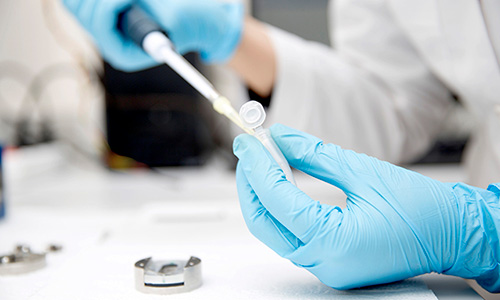
Coronavirus (COVID-xix) Email Alerts
Sign up to receive coronavirus (COVID-19) email updates from Johns Hopkins Medicine.
Diaphragmatic Breathing (Belly Breathing)
Deep breathing restores lung role by using the diaphragm. Breathing through the nose strengthens the diaphragm and encourages the nervous system to relax and restore itself.
When recovering from a respiratory illness like COVID-19, information technology's of import not to rush recovery. This deep breathing exercise is broken up into phases to take into account individual ability. Start with Phase 1, and merely increment repetitions or motility to the next phase when you tin can complete the exercise without feeling too out of jiff.
Phase one: Deep Breathing While On Your Back
- Lie on your back and bend your knees then that the lesser of your feet are resting on the bed.
- Identify your easily on top of your breadbasket or wrap them around the sides of your stomach.
- Close your lips and place your natural language on the roof of your rima oris.
- Breathe in through the nose and pull air downward into your stomach where your easily are. Try to spread your fingers autonomously with your breath.
- Slowly breathe your breath through the nose.
- Repeat deep breaths for 1 infinitesimal.
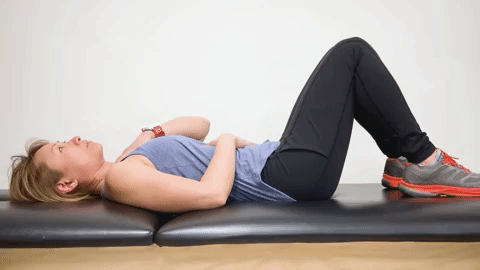
Stage 2: Deep Breathing While on Your Stomach
- Lie on your tummy and rest your caput on your hands to allow room to breathe.
- Close your lips and place your tongue on the roof of your mouth.
- Breathe in through your nose and pull air down into your tummy. Attempt to focus on your breadbasket pushing into the mattress as you breathe.
- Slowly exhale your breath through your nose.
- Repeat deep breaths for i minute.
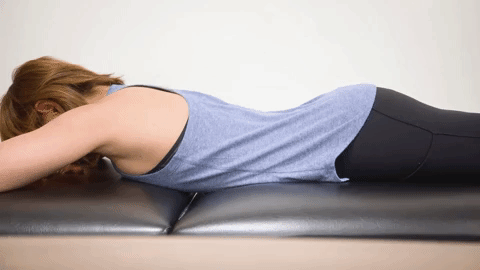
Phase 3: Deep Breathing While Sitting
- Sit down upright on the edge of a bed or in a sturdy chair.
- Place your hands around the sides of your stomach.
- Close lips and place your tongue on the roof of your mouth.
- Breathe in through your nose and pull air down into your stomach where your easily are. Attempt to spread your fingers autonomously with your jiff.
- Slowly breathe your breath through your nose.
- Repeat deep breaths for one minute.
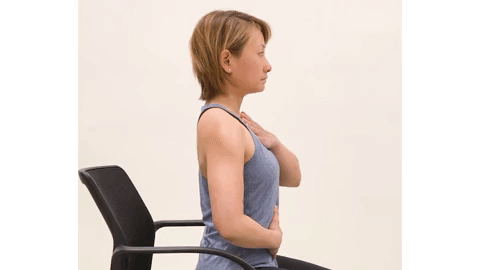
Phase 4: Deep Breathing While Standing
- Stand up upright and place your easily around the sides of your stomach.
- Close your lips and place your tongue on the roof of your rima oris.
- Breathe in through your nose and pull air downwardly into your breadbasket where your hands are. Try to spread your fingers apart with your jiff.
- Slowly breathe your jiff* through your nose.
- Repeat deep breaths for 1 minute.
*You may practice humming exhalation hither if desired.
Exercises to Facilitate Motion
In this video, physical therapist Peiting Lien from the Johns Hopkins Rehabilitation Network demonstrates proper diaphragmatic breathing techniques, and goes on to show a few exercises to ease into movement.
Yawn to a Smiling
This practise incorporates motion with deep breathing, which helps increment coordination and build strength in the arms and shoulders. It also opens up the muscles in your chest to give the diaphragm space to expand.
- Sit upright on the edge of your bed or in a sturdy chair.
- Reach arms overhead and create a big stretching yawn.
- Bring your arms down and finish by grin for three seconds.
- Repeat for one minute.
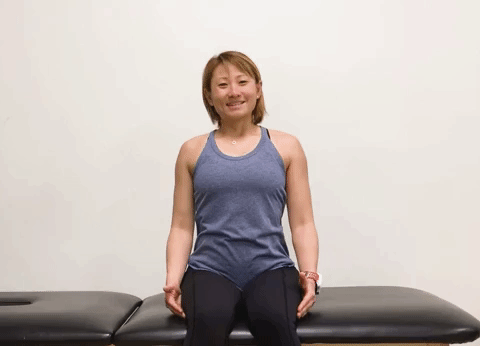
Humming
Humming while exhaling helps increase nitric oxide production in the body. Nitric oxide helps with neural plasticity (building and repair of the nervous system) and it dilates claret vessels, enabling more than oxygen to be delivered throughout the body. Humming is as well calming and soothing, information technology reduces stress and it tin help the patient remain in restoration style.
- Sit upright on the edge of your bed or in a sturdy chair.
- Identify your hands around the sides of your stomach.
- With your lips closed and your natural language on the roof of your mouth, exhale in through your nose and pull air downwards into your stomach where your hands are. Effort to spread your fingers apart with your jiff.
- Once your lungs are full, keep your lips closed and exhale while bustling, making the "hmmmmmm" sound. Observe how your hands lower back down.
- Again, inhale through your nose, then breathe through your nose while humming.
- Repeat for 1 minute.
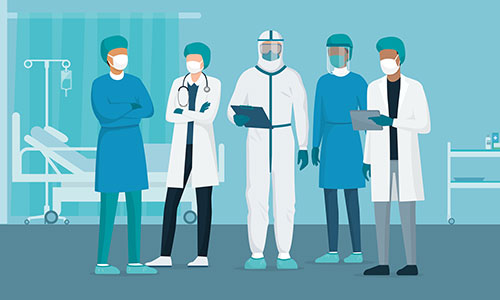
COVID-19 Rehabilitation Resource
If yous need additional back up during COVID-nineteen recovery, Johns Hopkins rehabilitation physicians and therapists tin can help you restore your strength and role. Our clinics are open and accepting new patients.
Source: https://www.hopkinsmedicine.org/health/conditions-and-diseases/coronavirus/coronavirus-recovery-breathing-exercises

0 Response to "Where to Cut to Breath Again"
Post a Comment